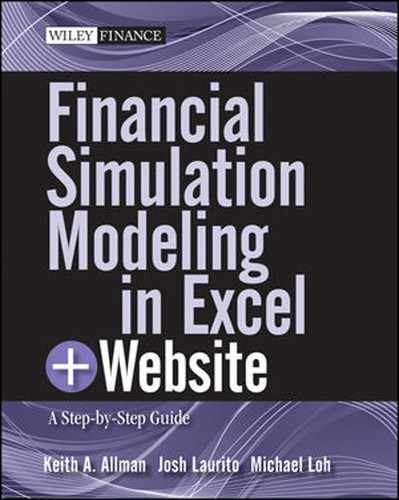CHAPTER 4
Option Pricing
With a set of basic skills developed, we can now move on to practical application. The first financial realm that we will apply simulation techniques to is option pricing. As we work our way through option pricing, you will see that simulation techniques can take on many forms and be intertwined with multiple financial disciplines. For instance, in the derivatives or options industry, one routinely encounters discussions about bonds, which then leads to interest rates. One may wonder why, if the purpose of a stock option is to purchase stocks, that one would need to know anything about the bond market? The quick answer to this question is that to price an option, the price must in some way be enforced by a market driven asset that represents the cost of borrowing as viewed by the entire financial industry. That asset is a bond, and it is the anchor all the derivative and option pricing models adhere to. We will discuss this concept in a little more detail further on, but to begin with we will start off with the most basic pricing model, the binomial tree. To demonstrate why an enforcer is necessary, we will use the binomial tree to model our most basic asset, the stock.
A note: This text is focused on practical application and will not formally explicate binomial trees. It also assumes that the reader is familiar with options and bonds as financial instruments. Binomial trees will be discussed only in a general sense to present ideas and concepts necessary to understand how to implement the Hull-White Trinomial tree later on. If the reader is interested in learning more about the theory of binomial trees, there are many good texts that cover this topic in more detail.
